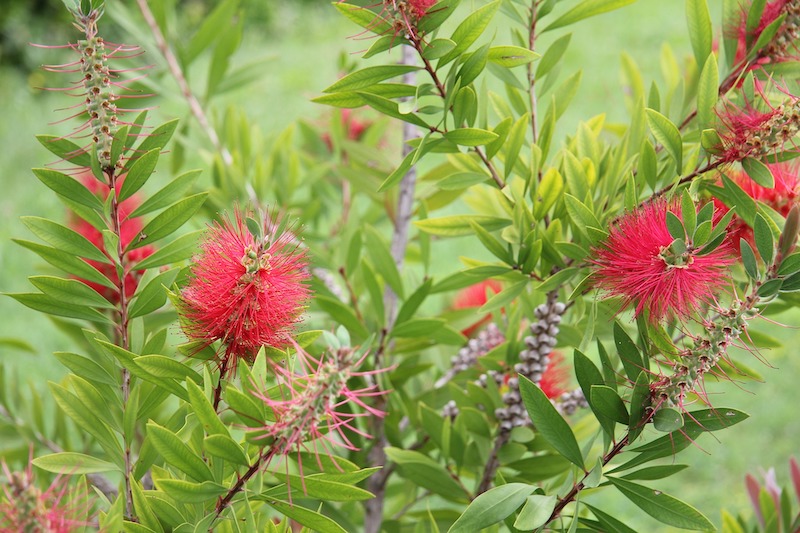Bottlebrush shrubs are great for low-maintenance landscapes and in naturalized areas of the garden. The natural shapes can range from full and spreading (Aesculus parviflora) to compact and upright (Callistemon citrinus) and even weeping (Callistemon viminalis). Pruning to keep the overall shape of these ornamental shrubs is rarely required, although deadheading and seasonal pruning to clean up winter-damaged branches are often needed.

When to Prune Bottlebrush
Callistemon bottlebrush varieties are evergreen and can tolerate pruning at just about any time of the year. Callistemon blooms on current year’s growth and will have sporadic blooming throughout the year in its preferred growing zones of 9-11. Pruning dead, dying, or diseased growth in the late winter keeps this shrub growing vigorously. Deadheading of Callistemon spp. is rarely needed. The flowers mature into interesting and decorative seed pods that can last for years on some varieties of Callistemon.
The deciduous Bottlebrush shrub, Aesculus parviflora, responds best to deadheading after it has finished blooming in the summer. Pruning early in the spring may result in no flowering, since this Bottlebrush blooms on old wood from the previous season. Light pruning in late winter to remove any damaged branches may also result in less flowering, although the shrubs quickly recover and will bloom normally in coming years.
Why Prune Bottlebrush
Sometimes growth can emerge from or near the base of the plant called sucker growth. These are small shoots that allow some types of shrubs to spread and fill in an area. Sometimes the suckers are a result of a plant being grafted onto a more hardy rootstock, resulting in a plant that can grow in a wider range of climates.
Callistemon and Aesculus are naturally suckering shrubs. If the side growth is left to mature, it will sap nutrients and energy from the main plant. Sometimes these shoots develop on shrubs that have been heavily pruned over time. Sucker shoots of any type should be removed as soon as possible, sometimes more than once a season. Simply cut the sucker off, below the level of the soil or as close to the base of the original shrub as possible.

How to Prune Bottlebrush
Step 1 - Deadheading
Cut off the spent flower spikes of the deciduous Bottlebrush shrubs in late summer. The next year's flowers form on old wood from the previous season.
Step 2 - Annual winter clean-up pruning
Cut out any diseased, dead, dying, or diagonal branches from the deciduous and evergreen varieties of Bottlebrush shrubs. This pruning keeps plant material healthy, which also lessens the chance of invasion from pests or disease. This pruning is done before growth begins in the early spring.
Step 3 - Cut out sucker growth
Cut any suckers that grow from the base of the shrub or from nearby. Suckers are one way that these shrubs spread, but they also sap nutrients and energy from the original shrub. Cut the sucker off below soil level or as close to a branch collar as possible.
Bottlebrush Pruning Tips
- Deadhead after flowering finishes
- Prune away winter-damaged branches early in the spring
- Sucker growth needs to be removed as soon as possible, while it is still smal
 |
Author Robbin Small - Published 5-15-2023 |
